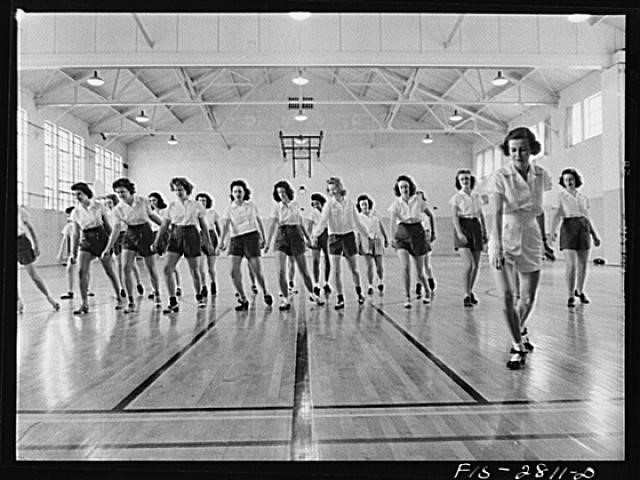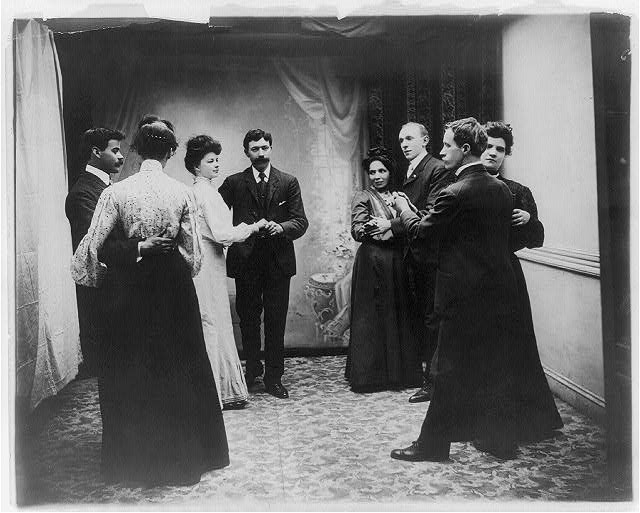By: Dominique DiFalco
 Growing up, one of my biggest dreams was to be a professional dancer. I attended classes until I was about six-years-old for tap and ballet and my best friend was an Irish dancer as well. It wasn’t until I was 16 when I was re-watching the amazing videos of me dancing my little heart out in front of a handprint-stained mirror that I came to a life altering revelation: I have no rhythm. None. The passion to dance that is present within my heart was never correctly transferred to my feet. Although crushed, I have decided to place this unseen potential into something more productive: discovering the relationship of modern tap dancing to traditional Irish step dancing.
Growing up, one of my biggest dreams was to be a professional dancer. I attended classes until I was about six-years-old for tap and ballet and my best friend was an Irish dancer as well. It wasn’t until I was 16 when I was re-watching the amazing videos of me dancing my little heart out in front of a handprint-stained mirror that I came to a life altering revelation: I have no rhythm. None. The passion to dance that is present within my heart was never correctly transferred to my feet. Although crushed, I have decided to place this unseen potential into something more productive: discovering the relationship of modern tap dancing to traditional Irish step dancing.
Although people believe it originated in the early 1900s, the phrase “tap dance” was not commonly used until 1928. Tap dance is believed to have originated from a mix of traditional Irish dance and African American dance from slavery times. Irish dance itself, though, is thought to have originated with the Druids’ dances during religious rituals dating back to 400 AD. In 1200, the Norman Conquest brought other traditional dances that evolved over the years to become the Irish jigs we have come to love today.
In 1995, the Los Angeles Times published an article about the history of tap dance and it states that “actual tap dance antecedents of Irish and Scottish solo step dancing and English clog dancing, which, blended with African dance movements, gave rise to indigenous American tap dancing”. Much like the Irish and American culture, traditional tap dance’s roots are a blend of cultures combined to create a unique dance unlike any other.
Dance itself dates back more than 9000 years to paintings discovered in India. For many cultures, dance is a way to take part in religious rituals, celebrate, and, to have a good time. For the Irish, step dance originated as a part of religious rituals, then transitioned to performing dance, traditionally in the halls of castles or for royalty who were newly arriving in the country. Despite the upbeat rhythms and traditionally happy dancing, Irish dance is also frequently used during wakes as a part of the mourning process, following the coffin to bagpipe music. Similarly, tap dancing is used for entertainment purposes, and although not generally used in religious services, tap’s presence in musical theater, specifically shows such as Thoroughly Modern Millie, A Chorus Line, The Tap Dance Kid and more, plays into the story telling that is traditionally associated with the dances from which it originates.
Sources
Irish Dance vs. Tap Dance (https://sites.psu.edu/coinenglish15/ )
The History of Irish Dance (http://www.irelandseye.com/dance.html )
Tap vs. Irish Dance (https://thesession.org/discussions/35435)
Retracing Steps of Tap’s History (http://articles.latimes.com/1995-12-25/entertainment/ca-17790_1_american-tap-dancing )
Irish Dancing vs. Tap Dancing (http://usslave.blogspot.com/2011/12/irish-dancing-against-tap-dancing.html )
Tap v. Irish Step (http://archbishopryanreview.com/674/arts-and-entertainment/tap-vs-irish-step/)